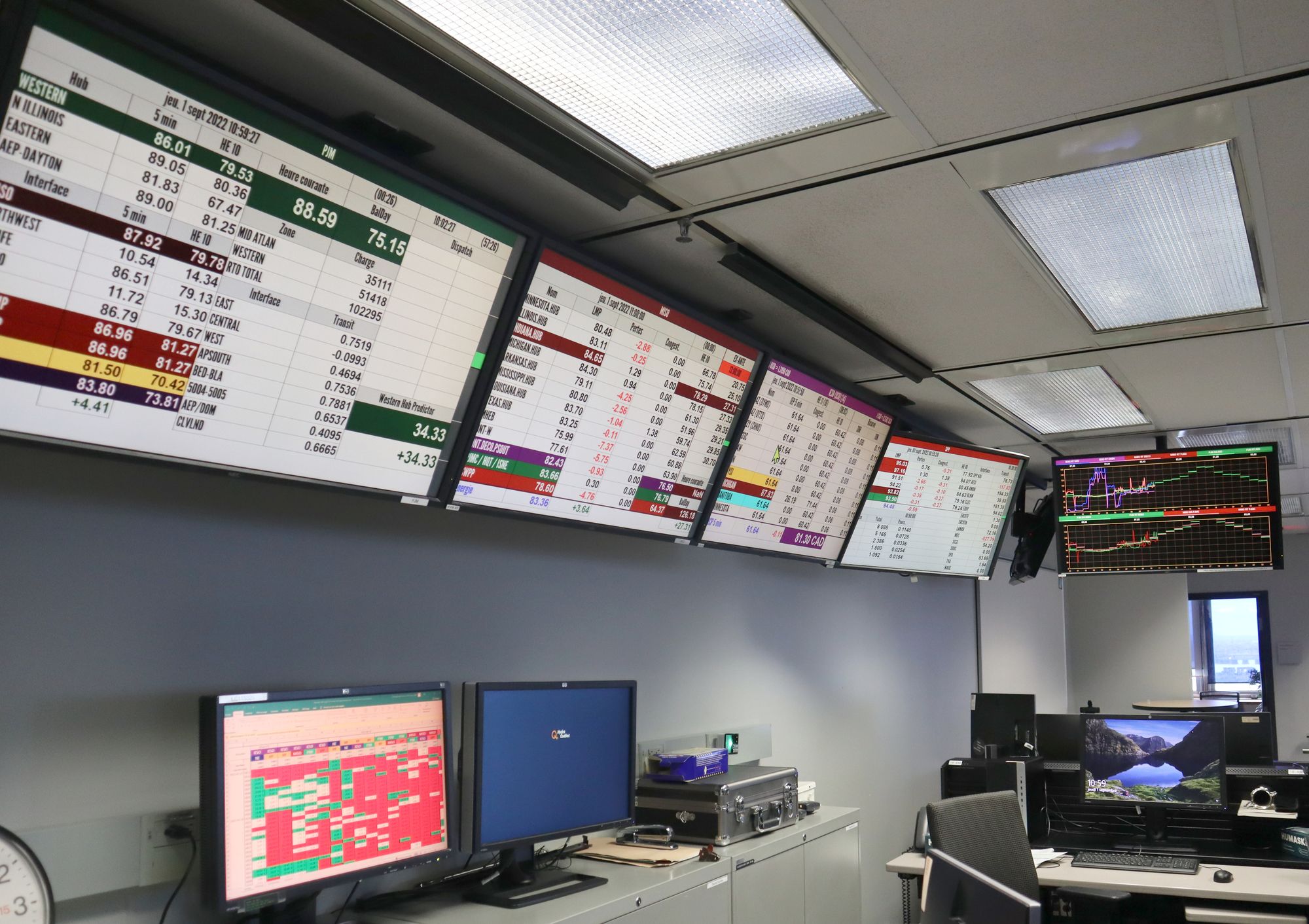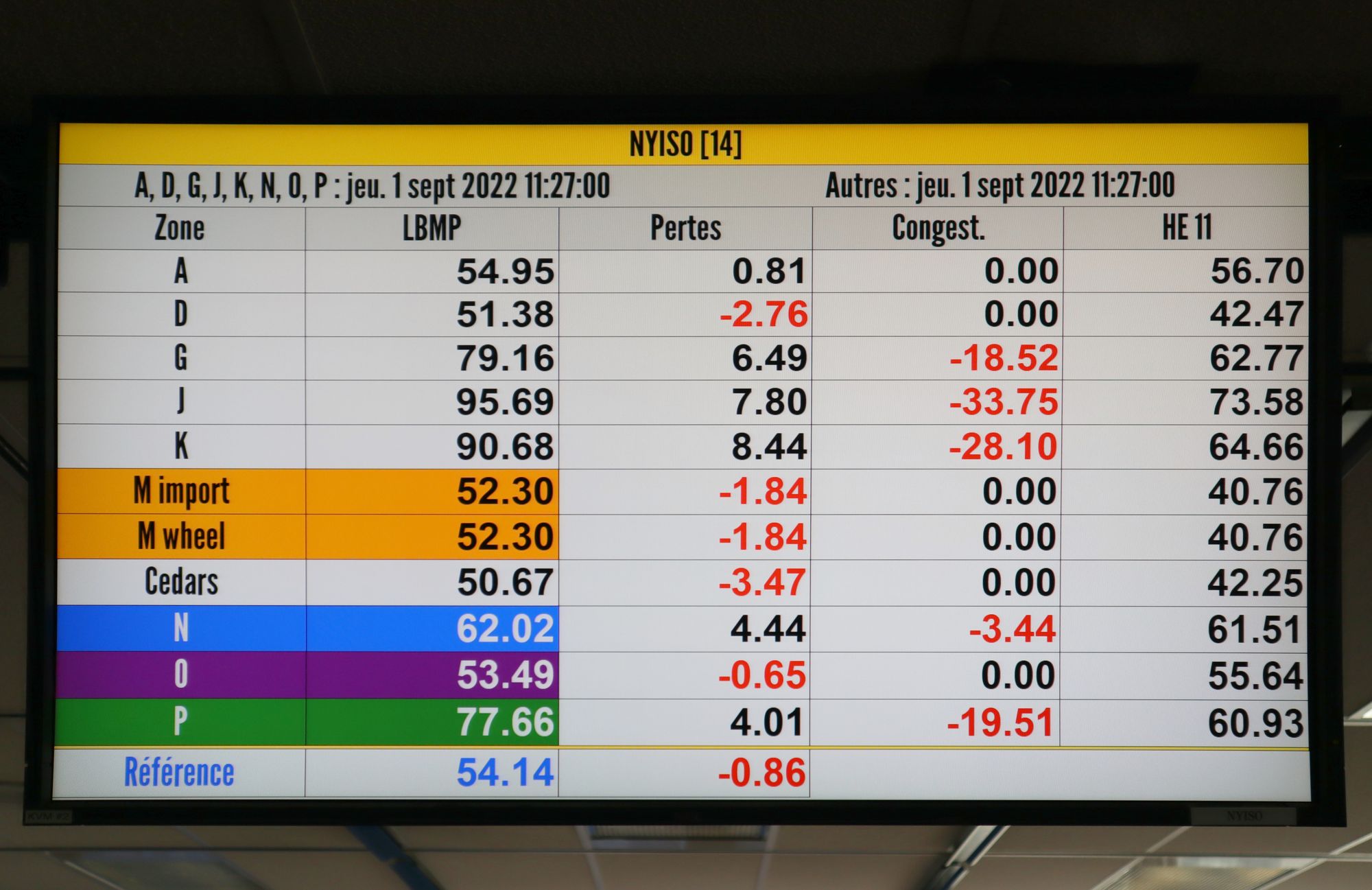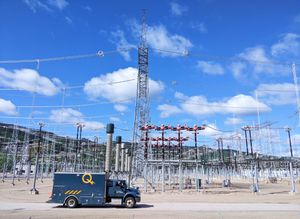Note: This is our second issue about Hydro-Quebec, the Canadian province-run utility that operates 61 hydroelectric generating stations and produces more electricity than the entire country of Malaysia. If you missed last week’s issue, find it here.
Since galavanting through the forests of northern Quebec seeking hydroelectric infrastructure, I’ve moved back to neighboring Ontario. Those far-off dams are still at least partially powering my home, though. Quebec only uses half of its generating capacity, and sells the rest to other utilities on the energy wholesale market. This is a critical function: for Hydro-Quebec and every other utility, the supply of electricity must match the demand at all times. Utilities have to put constant effort toward maintaining equilibrium and buying and selling surplus electricity helps level out the supply.
Hydro-Quebec’s portfolio of mega-dams sell energy through 15 interconnections that connect to neighboring states and provinces. Energy is sold primarily into the US Northeast, to utilities in New York, Connecticut, Maine, Massachusetts, New Hampshire, Rhode Island, and Vermont. It’s a huge portion of Hydro-Quebec’s business – in 2022 the utility made almost $3 billon CAD ($2.2 billion USD) from exports, a staggering 64% of net income.
Today Hydro-Quebec is less focused on building out new generating capacity; instead, the utility is working to build out new transmission infrastructure and increase its market size. The construction workers at lonely work camps have largely been replaced with office workers who figure out where the power goes and lobby governments to approve transmission lines. This work is less likely to be immortalized in a ballad, but it is critically important to a low-carbon future.
-Hillary Predko
In the Members' Slack, our reading group just wrapped up Chip War with a conversation with Chris Miller; we'll be publishing the interview soon. Next, we're reading How Big Things Get Done by Bent Flyvbjerg and Dan Gardner.
JOBS.
- SPAN is hiring a hardware prototype fabricator in SF.
- 99% Invisible is hiring an executive producer in California.
- Charm Industrial is hiring a senior mechanical engineer in SF.
- Hammerhead is hiring a senior electrical engineer in Colorado Springs, CO, Chicago, IL, or Phoenixville, PA.
- If you're hiring designers, engineers, and operators, you can promote the roles you're hiring for here.
PLANNING & STRATEGY.
Hydro-Quebec’s export expansion has not been without controversy. I’ve been particularly interested in the rollercoaster ride that is the Central Maine Power (CMP) transmission corridor construction. The corridor was planned after New Hampshire voters rejected a Hydro-Quebec transmission line in 2018. The new route through Maine was approved, but once construction was underway, a 2021 referendum retroactively revoked approvals and stalled the project.
Opposition to the CMP corridor came from a tangled assembly of odd bedfellows – environmentalists, Indigenous groups, and fossil fuel producers. The tensions between them were awkward. Governments have a moral and legal responsibility to work with Indigenous groups on development projects, but their legitimate concerns can be co-opted by fossil fuel interests with deep pockets. And indeed, the referendum opposing CMP’s construction was largely funded by companies with local stakes in the gas market.
In another turn last week, the referendum was overturned by a jury of Maine residents, and the CMP corridor has the green light once again. Further, the Supreme Court of Maine ruled that the referendum was “likely unconstitutional” for violating the prohibition against retroactive laws. The controversy around the CMP corridor points to a bigger challenge in decarbonization: electricity transmission infrastructure is not popular. It’s estimated that the US needs to expand transmission by 50 to 90 percent to achieve the Biden administration’s goal of 100 percent clean electricity by 2035 – a monumental task even without the challenges of finding the political will.
MAKING & MANUFACTURING.
While the CMP line’s progress was slowed in the courts, another cross-border transmission project broke ground: the Champlain Hudson Power Express (CHPE, pronounced chippy). Fifteen years after the project was first announced, cables are being delivered to the Hudson Valley. The 545 km underground and underwater transmission line will link a Hydro-Quebec station in Southern Quebec to a converter station in Astoria, Queens. This direct line into NYC is meant to tackle the city’s fossil fuel-heavy grid and enable gas-burning plants to be closed. The 1,250 megawatts that will be imported annually are projected “to power over one million homes, and will reduce carbon emissions by 37 million metric tons statewide, the equivalent of taking over half a million cars off the road every year.”
CHPE’s success thus far can be partially attributed to working in partnership with Indigenous communities rather than in opposition. As mentioned last week, the Canadian portion of CHPE will be co-owned by Hydro-Quebec and the Mohawk Council of Kahnawà:ke (MCK). The council is a both partner and a vocal supporter in media scrums, issuing a statement against “willfully uninformed critics.” Grand Chief Sky-Deer said, “[t]he MCK would not have participated in this project unless it fully aligned with Kahnawà:ke’s environmental values.” She sees decarbonized energy infrastructure as part of our “collective duty to do the right thing for Mother Earth.” Further, the MCK is invested in NYC’s success specifically. She went on to say, “Kahnawà:ke ironworkers are known worldwide for the role they played in building its impressive skyline. For that, and other reasons, this community has a strong relationship with New York City – one that continues to this day.” To learn more about this history, see this film with incredible footage of the death-defying trade, and these archival photos. Mohawk ironworkers still commute across the border every week, to build NYC.
MAINTENANCE, REPAIR & OPERATIONS.

This complex tangle of exports is carefully managed around the clock by a team of energy traders based out of Hydro-Quebec’s headquarters in downtown Montreal. Some deals are set out years or months in advance, but the day-to-day attention goes toward the day-ahead and real-time markets.
Each morning Hydro-Quebec’s traders assemble to sell electricity on the day-ahead market. They watch the price of gas closely, as it impacts whether neighboring utilities are likely to buy hydroelectricity: low gas prices make Hydro-Quebec less competitive, and high prices are a boon (the utility’s massive 2022 profits can largely be attributed to high gas prices following Russia’s invasion of the Ukraine).

The market is in constant flux as more renewables come online and commodity pricing for fossil fuels vacillates. Simon Bergevin, Senior Director at HQ’s Trading Floor, explained how intermittent renewables are already creating interesting market dynamics,
For example, in Ontario, you might have all of your wind producing so you have 4000 MW of wind. Another day, it could be 100 MW of wind. This makes a big difference in your price and your stacking [how competitive your offer is]. With 4000 MW of wind, you might have a price near $10 [per MW]. But without much wind production, it could be near $50 or $60 [per MW] – it has a huge impact on the market.
To anticipate intermittent generation, the trading floor has a staff meteorologist who models how the weather will impact both demand and generation. Behind-the-meter solar, such as rooftop installations, are particularly hard to model as production data isn’t publicly available. To compute the load generated, Hydro-Quebec maintains county-by-county estimates of behind-the-meter solar capacity, and compares those to satellite images every 15 minutes to estimate solar radiation. If the sun is shining, it only takes about eight minutes to switch off a turbine at a remote dam and lower hydro production. Once cloud cover blows through, hydro-generation can be ramped up just as quickly.
DISTRIBUTION & LOGISTICS.
The voltage of a 735-kV line is six times more than that of a 120-kV line but it can carry 52 times more power (MW). Chart adapted from Charging Ahead by Jean-Benoît Nadeau and Julie Barlow.
Very-high voltage transmission lines are the key to making Quebec’s geographically distributed dams a viable source of energy. The technology was invented in the 1960s, during the mega-dam construction, by a young Hydro-Quebec engineer. The lower voltage, off-the-shelf lines of the time would have required dozens of lines – both an eyesore and a maintenance liability. Increasing the current on those lines would lead to overheated, sagging lines. Worse yet, it would be inefficient: as a portion of the energy transmitted dissipates as heat, there would be less electricity at the destination. So today, Hydro-Quebec generating stations typically produce power at 315 kV, which is then stepped up to 735 kV (almost 7000x the voltage that you'll find in your standard wall receptacle) before being transmitted through hundreds of kilometers of forests.

Hydro-Quebec also has another trick up its sleeve for long-distance transmission: high voltage direct current (HVDC). While AC decidedly won the war of the currents, DC transmission is more efficient for delivering bulk power between asynchronous AC grids. For point-to-point transmission, HVDC generally has lower costs and lower losses than AC, and the lines can be installed underwater. To move electricity from remote dams to the American market, an HVDC line runs over 1400 km from Radisson, Quebec to Boston. CHPE will also be an HVDC line.
DISTRIBUTION & LOGISTICS.
CHPE will run directly from Quebec into Queens, bypassing the northern portion of NY’s grid and thus one of the state’s most pernicious problems: transmission congestion. Upstate, most energy comes from wind and domestic hydropower, and downstate, energy is generated almost exclusively by fossil fuels. The two regions are functionally on separate grids, and the transmission system doesn’t have enough capacity to move clean energy downstate at peak times.

Transmission congestion is akin to a funnel: you can pour a large volume of liquid through the mouth but the amount running out is limited by the size of the spout. Grid interconnections have a limited capacity – when there is overproduction in one region and underproduction in another, electricity may be unable to route to the area with higher demand. While detractors fear that the CHPE line would disincentivize knitting the two grids together more effectively, other planned transmission projects are underway to harmonize New York’s grid. This includes Clean Path New York, which will enable 7.5 million MWh of electricity transmission to NYC from upstate.
SCOPE CREEP.
Hydro-Quebec’s 27 large reservoirs hold enough water to generate 176 billion kWh – enough to power the province for a whole year. They function as massive batteries, supplying power when water flows out through generating stations, and recharging as the dammed rivers fill them up.
If Hydro-Quebec were to start importing energy from neighboring utilities, those batteries could be charged more strategically. If a nearby wind farm were overproducing, for instance, Hydro-Quebec could purchase the surplus and turn their dams off, letting the reservoirs fill up. So, if Quebec were to run on New York wind power today, the reservoirs would hold one more day’s worth of water to generate electricity tomorrow. Lynn St-Laurent, senior communications advisor at Hydro-Quebec, sees the utility’s ability to store water in reservoirs as a pathway to decarbonized storage:
If there is too much wind [produced in other markets] and there’s low demand, we can buy that power and produce less from our reservoirs and store it. If there is some wind but it doesn’t meet demand, we can flow all of that back. It’s a better storage system – chemical batteries cannot sustain repeated high demand over several days. There is this beautiful harmony that can happen within a more integrated grid. But you need the transmission to do that.
Dammed rivers make for a simple, lithium-free way to store potential energy. Researchers at MIT modeled pathways to reduce New England’s carbon emissions and found that in every successful scenario, the Quebec-New England transmission lines would need to be used for both import and export. An upcoming wind farm in subarctic Quebec (co-owned by Innu communities) will test out this storage strategy, limiting hydro production when wind production is high. Quebec’s cache of reservoirs can support the energy transition of northeastern North America if we commit to improving interregional transmission – and, ideally, keep working toward equality and climate justice simultaneously.
Thanks again to my road trip crew (Lee, Thomas, Fiona, Daemon, Dave, and Kyle) and to my expert readers (Deb and Stewart). Thanks also to Hydro-Quebec for letting me visit the energy trading floor, which unfortunately does not offer free public tours. If you want to ogle the electricity market in real-time, see NYISO’s dashboard here and ISO-NE’s here.
It was a real joy to dig into the energy systems around me, and I’m excited to learn more about the nuclear power plants near my new home and revisit Niagara Falls with new eyes.
Love, Hillary
p.s. - We care about inclusivity. Here’s what we’re doing about it.
Editor's note: When first published, the pronoun for Grand Chief Sky-Deer said was misstated and has been corrected. A $10 donation to Tsi Tyónnheht Onkwawén:na has been made.




